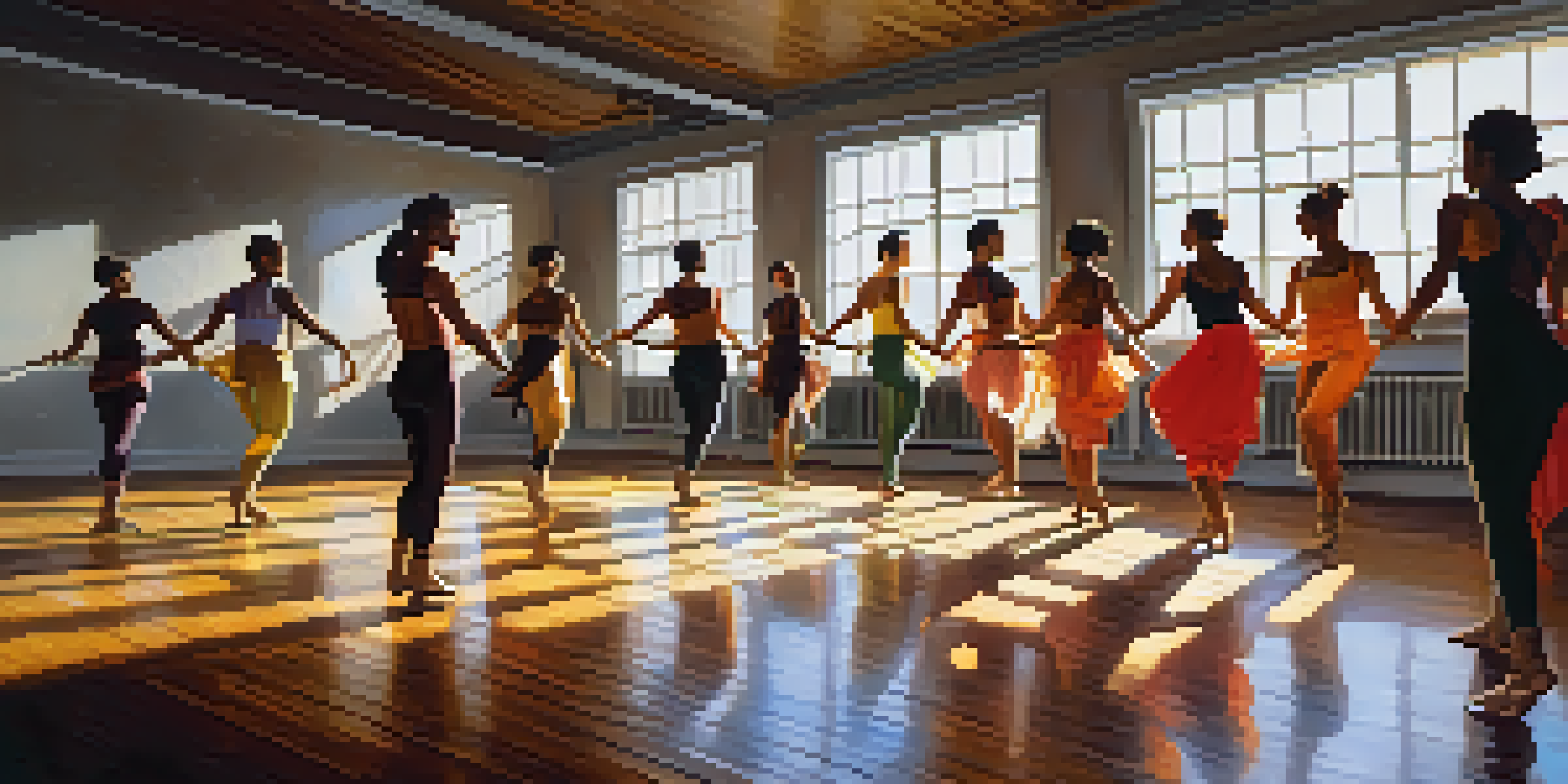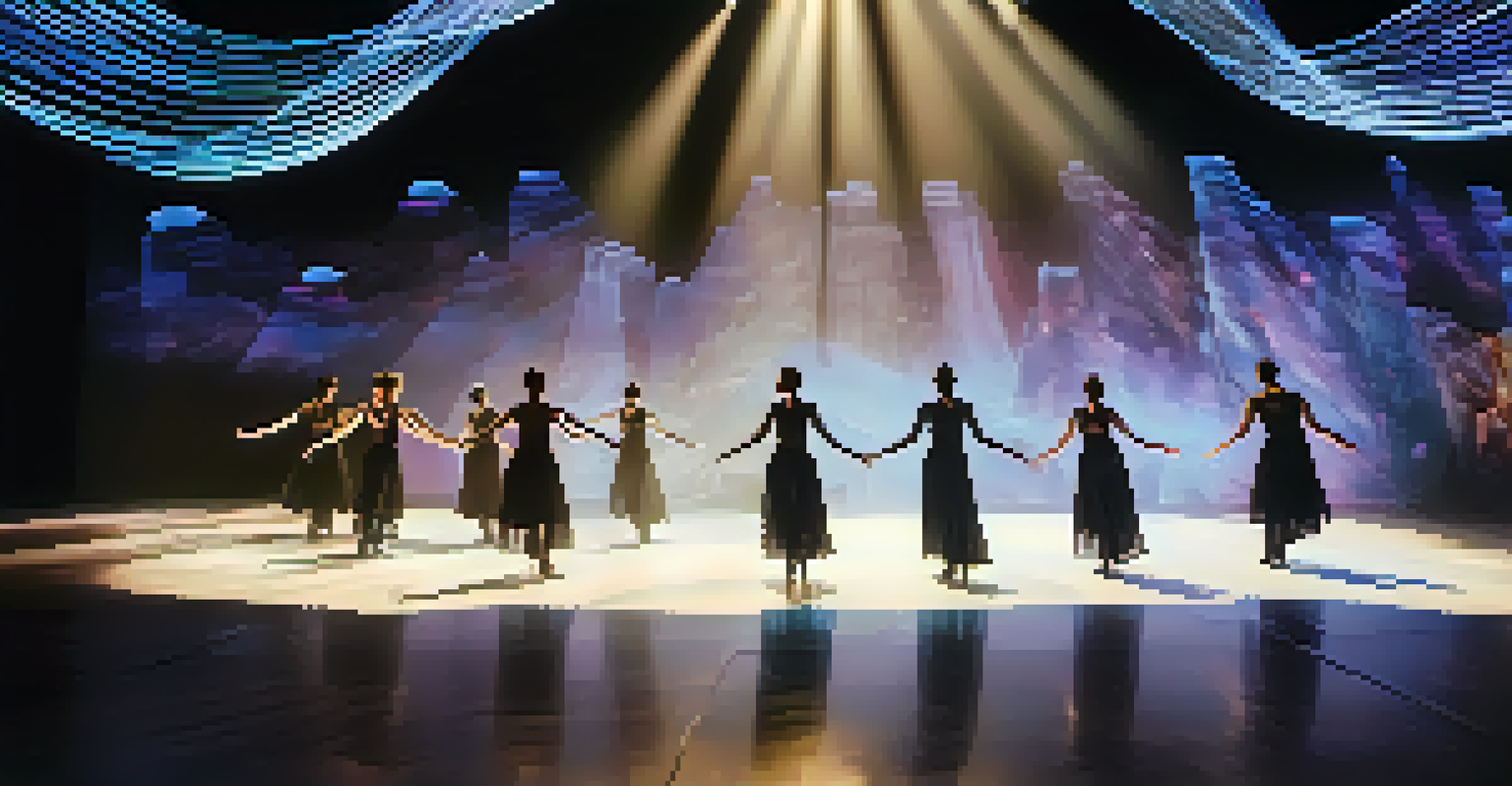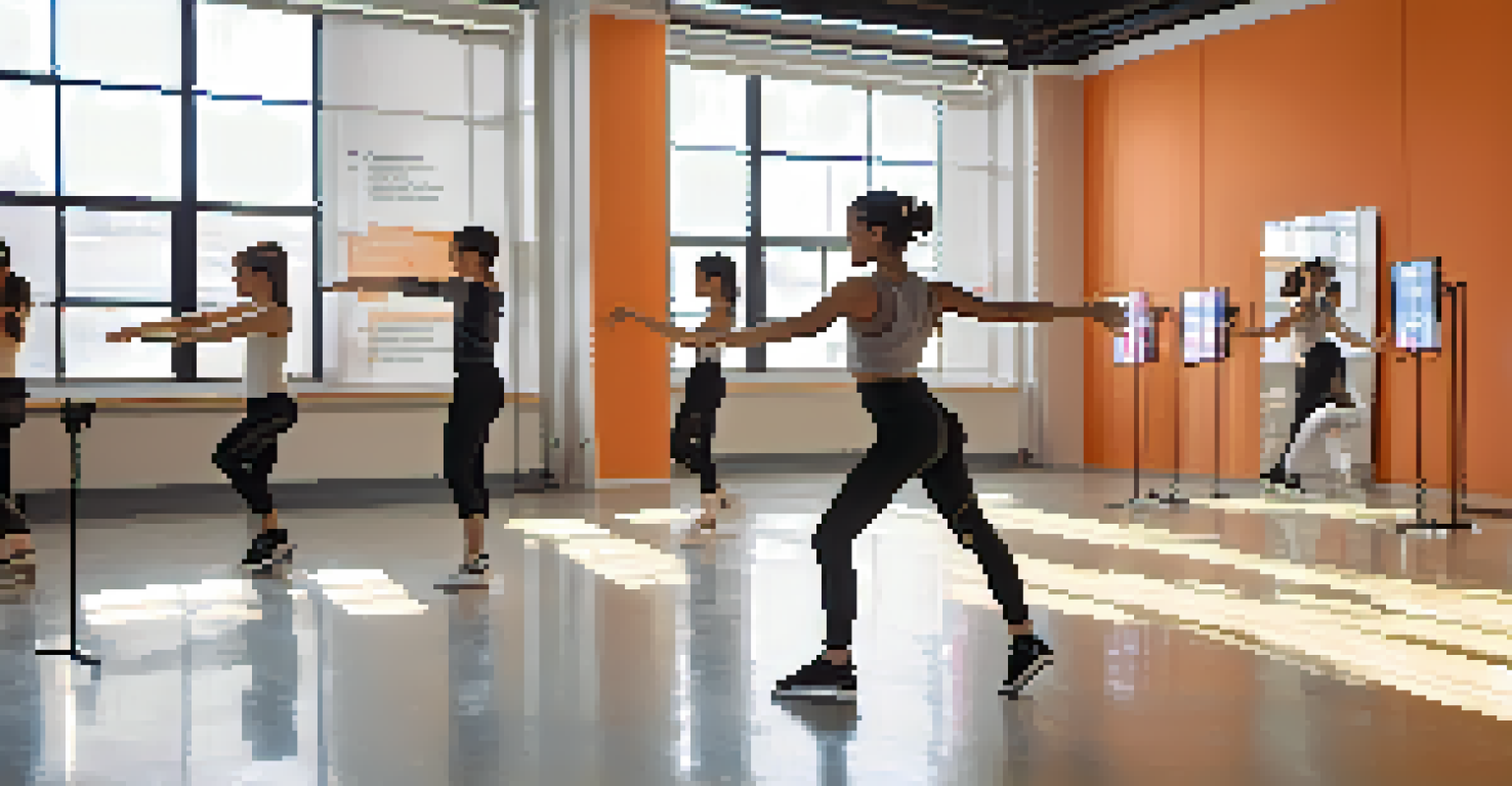The Role of AI in Choreography and Dance Creation Today

AI: A New Partner in Dance Creation
Artificial Intelligence is making waves in the world of dance, acting as an innovative partner for choreographers. By analyzing vast amounts of dance data, AI can suggest movement patterns and styles that may not be immediately obvious to human creators. This collaboration between technology and artistry opens up new avenues for creativity, allowing choreographers to explore uncharted territories in their work.
The future of dance will be defined by the artists who embrace technology as a tool for creativity.
Imagine a choreographer working late at night, struggling to find the perfect sequence of movements. With AI at their side, they can receive instant feedback and suggestions, streamlining the creative process. This synergy not only enhances productivity but also encourages a dynamic exchange of ideas that can lead to groundbreaking performances.
Moreover, AI can learn from various dance styles across cultures and eras, offering a rich tapestry of inspiration. This ability to fuse diverse influences can lead to unique choreography that resonates with audiences on a deeper level, bridging the gap between tradition and modernity.
Enhancing Creativity Through AI Tools
Several AI tools have emerged that assist choreographers in their creative journeys. For instance, platforms like 'Google's Magenta' allow artists to experiment with movement generation, using algorithms to inspire new choreography. These tools not only save time but also serve as a source of inspiration, sparking ideas that a choreographer might not have considered otherwise.

Choreographers can input their movements into these AI systems, which can then analyze and suggest variations or entirely new sequences. This iterative process encourages experimentation, ultimately leading to more dynamic and engaging performances. It's akin to having an artistic collaborator who never tires and is always ready to brainstorm.
AI Enhances Dance Creativity
AI serves as an innovative partner for choreographers, suggesting new movement patterns and styles that enrich the creative process.
As these tools evolve, they become more intuitive and user-friendly, making them accessible to a wider range of artists. This democratization of technology means that even emerging dancers can leverage AI to enrich their creations, leveling the playing field in the world of dance.
AI in Dance Performance: Real-Time Adaptation
The application of AI isn't limited to choreography; it also extends to live performances. AI systems can analyze audience reactions in real-time, allowing dancers to adjust their performances based on viewer engagement. This creates a more interactive experience, blurring the lines between performer and spectator.
Collaboration between human creativity and artificial intelligence can lead to unexpected and beautiful results.
For example, imagine a dance performance where the lighting and music dynamically change in response to the audience's energy levels. AI can make these adjustments on the fly, ensuring that each performance is unique and tailored to the moment. Such innovations enhance the emotional connection between performers and their audiences.
This real-time adaptability not only elevates the performance experience but also provides valuable feedback for dancers. By understanding what resonates with their audience, they can refine their craft and explore new artistic directions, ultimately pushing the boundaries of dance.
AI and Dance Education: A New Learning Tool
AI is also transforming dance education by providing personalized learning experiences. Dance students can use AI-driven applications to receive feedback on their technique, helping them improve at their own pace. This tailored approach to learning can significantly enhance their skills and confidence.
Furthermore, AI can serve as a virtual dance partner, allowing students to practice movements and routines without the need for a physical partner. This flexibility is especially beneficial for those who may not have access to regular dance classes or partners, making dance more inclusive and accessible.
Real-Time Adaptation in Performances
AI can analyze audience reactions during live performances, allowing dancers to adjust their routines for a more engaging experience.
Additionally, AI tools can analyze students' progress over time, identifying areas for improvement and suggesting targeted exercises. This data-driven approach empowers dancers to take charge of their training, fostering a sense of ownership in their artistic development.
Collaborations Between AI and Human Choreographers
The collaboration between AI and human choreographers is a fascinating one, often leading to unexpected results. This partnership can challenge traditional notions of authorship in dance, as new works emerge from the melding of human creativity and machine learning. Choreographers can take on the role of curators, selecting and refining the movements suggested by AI.
One notable example is the project where choreographers worked with AI to create a dance piece that featured movements generated entirely by the machine. The result was a captivating performance that showcased the beauty of human expression interwoven with algorithmic patterns, highlighting the strengths of both.
This coexistence raises intriguing questions about the future of dance and creativity. Can AI truly understand the nuances of human emotion expressed through movement? The ongoing dialogue between artists and technology continues to evolve, shaping the landscape of contemporary dance.
Challenges and Ethical Considerations of AI in Dance
Despite the numerous benefits of AI in dance, there are challenges and ethical considerations that need to be addressed. One primary concern is the potential for AI to overshadow human creativity, leading to a reliance on technology rather than personal expression. As dance is inherently an art form tied to emotion and individuality, finding a balance between AI assistance and human creativity is crucial.
Additionally, there are questions about ownership and copyright when AI is involved in the creation process. If an AI-generated dance sequence is performed, who holds the rights to that creation? These discussions are vital as the dance community navigates the intersection of technology and artistry.
AI Transforms Dance Education
AI-driven applications provide personalized learning experiences for dance students, enabling them to improve their skills at their own pace.
Moreover, ensuring that AI tools are accessible to all dancers, regardless of their background, is essential. As the digital divide persists, it's important for the dance community to advocate for equitable access to technology, enabling every dancer to benefit from these innovative tools.
The Future of AI in Dance: A Collaborative Journey
Looking ahead, the future of AI in dance appears promising and full of potential. As technology continues to evolve, so too will the ways in which choreographers and dancers integrate AI into their practice. This collaborative journey is likely to lead to new styles, techniques, and forms of expression that push the boundaries of what dance can be.
Moreover, as AI becomes more sophisticated, we can expect even greater levels of interaction between performers and technology. Imagine immersive performances where AI creates a responsive environment that adapts to the dancers' movements in real-time, creating a multi-sensory experience for audiences.

Ultimately, the role of AI in dance will be defined by the artists who embrace it. By viewing AI as a tool rather than a replacement, the dance community can harness its power to enhance creativity, foster collaboration, and explore new artistic horizons. The dance of tomorrow promises to be a beautiful fusion of human artistry and technological innovation.